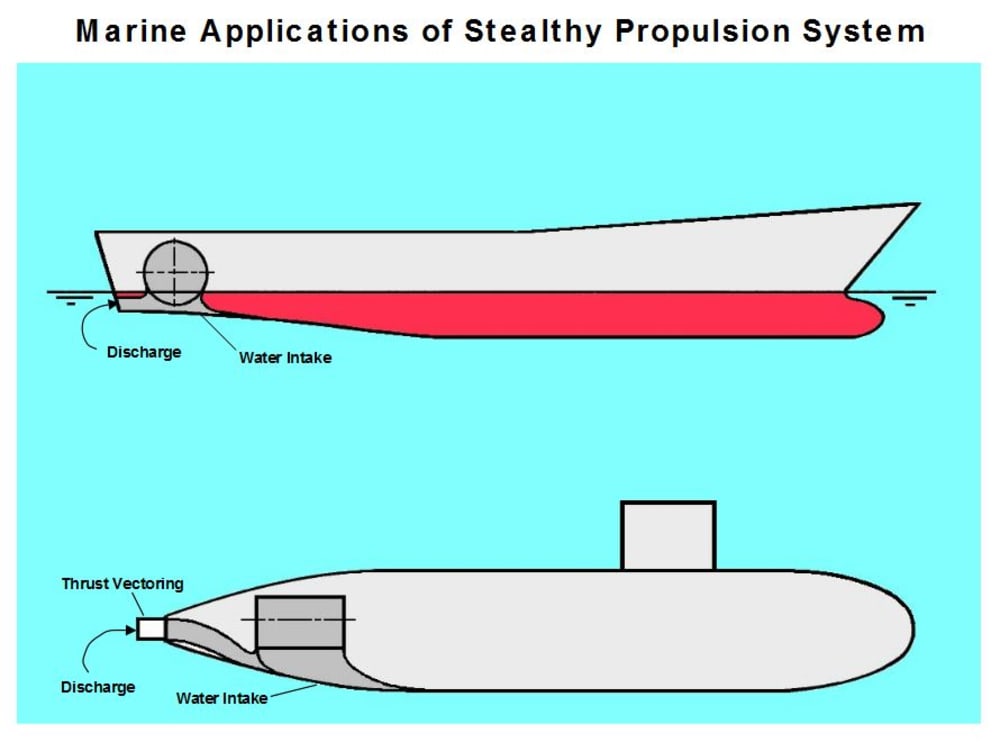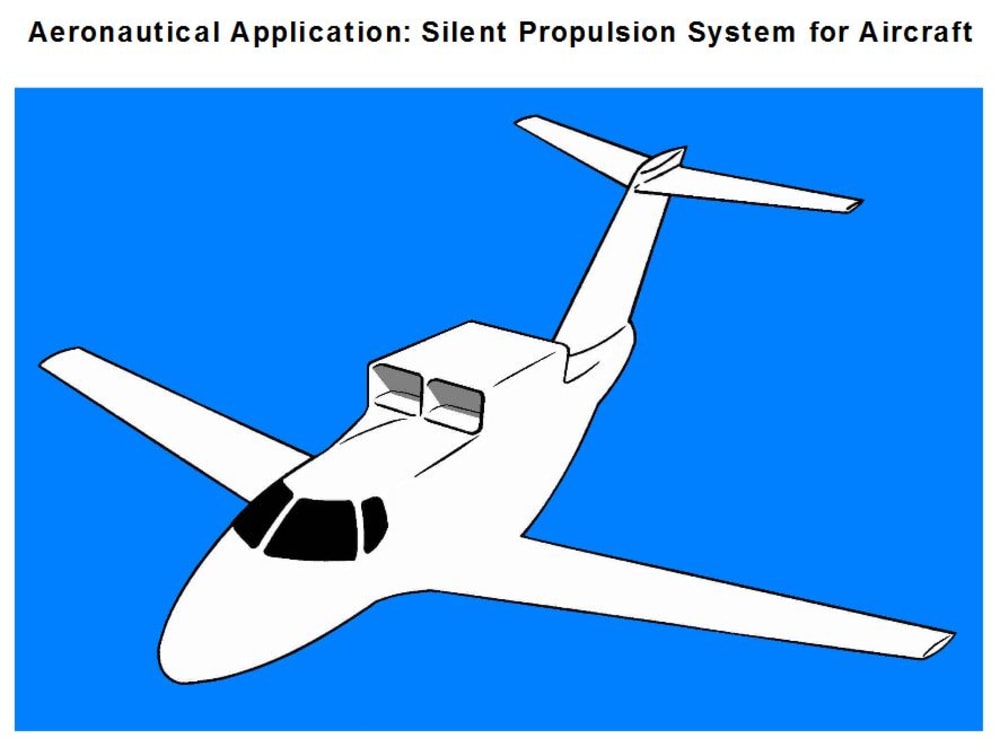Hydrodynamically speaking, screw propellers of conventional marine propulsions represent vortex systems rotating in transverse to the flow plane that generates periodic impulses of pressure in water and this way create underwater acoustic field being used for detection and identification of ships.
Intensity of the underwater acoustic field (hydrophone noise) is the key parameter that determines survivability of a ship and her ability to accomplish her mission, and, finally, outcome of marine warfare. So, reduction or, better, elimination of periodic impulses produced by naval propulsion systems represents a vital problem of modern combat ships and, especially, submarines.
The new propulsion system doesn't employ the idea of rotating vortices. Instead it produces an array of distributed stationary vortices and, so, doesn't generate any periodic impulses.
Consequently such relatively simple and reliable propulsion system (driven by conventional powerplants) features unique acoustic potentialities and could serve as a basis for development of absolutely stealthy surface ships and submarines, which can accomplish their missions undetected and unimpeded.
Known silent propulsion devices (based on, e.g., MHD effect) developed as an alternative to propellers do not possess as a rule required practicality and do not provide with a level of parameters being comparable with conventional propellers.
In contrast, side by side with simplicity and reliability, the new marine propulsion system can ensure quite acceptable thrust and efficiency characteristics that results in appropriate speed and range of marine vehicles.
Another promising area of application of the new system is aviation, where such silent propulsion could be used instead of noisy airscrews to provide quiet operation of aircraft.
The same physical effect of mentioned new propulsion system in marine area could be realized also in a form of Friction-Free Displacement Technology ensuring development of efficient and stealthy high-speed displacement marine vehicles of 100 kt + capabilities.
Like conventional ships the vessel employing this technology is supported in water by buoyancy (Archimedean forces) and, so, has no special limitations on its displacement and cargo-carrying capacity (in contrast to hydrofoils and WIGs, e.g.). At the same time the specific design of this vessel completely eliminates its hydrodynamic frictional drag that provides such ship with unprecedented performance and economy.
So, ships based on this technology should be much more effective than conventional marine vehicles (ensuring unparalleled speed, range and low consumption of fuel per t.nm), while could be realized in various civil applications including fast ferries, container ships, etc., and as naval ships from super-fast naval transports and frigates up to super-high-speed aircraft carriers (which, e.g., could cross Pacific Ocean in about 2 days and moreover would generate no hydrophone noise).
Like this entry?
-
About the Entrant
- Name:Sergey Orlov
- Type of entry:individual
- Patent status:none





